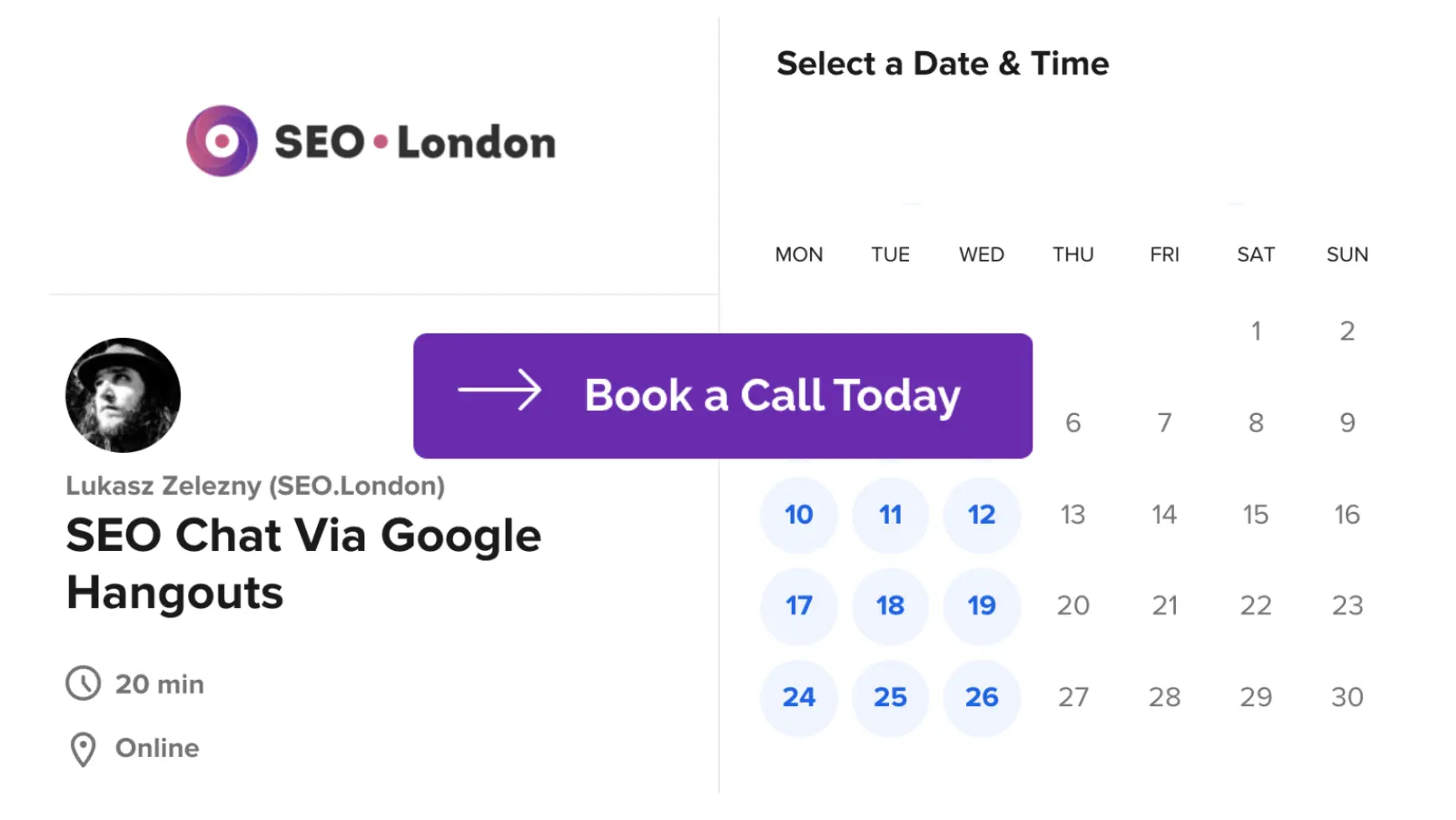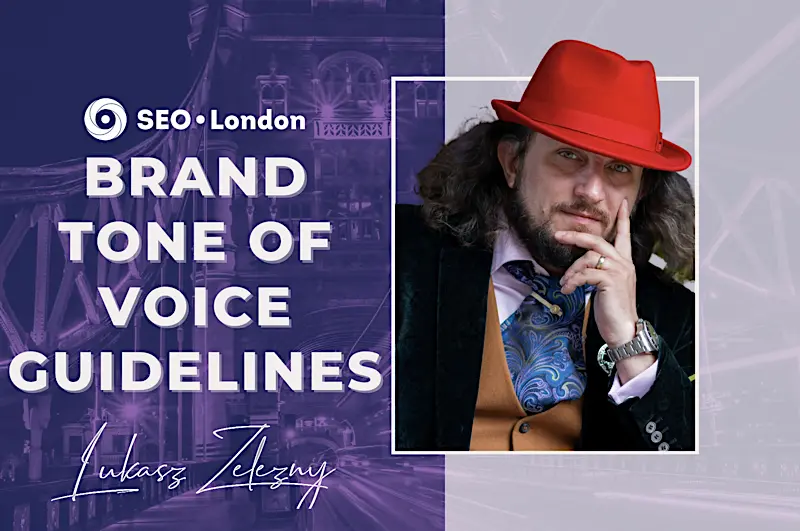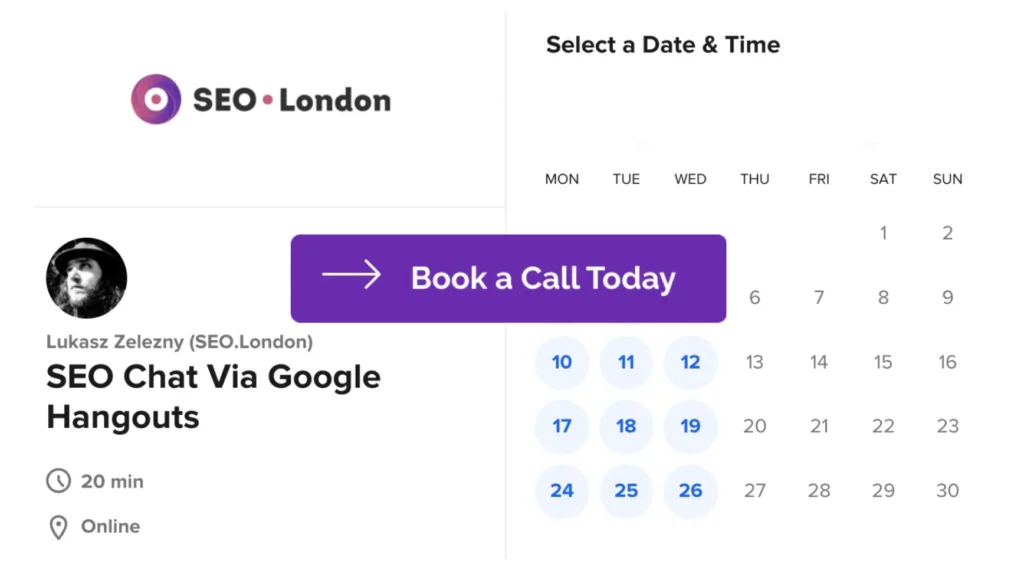Ever wondered how some brands manage to have interesting, personality-driven content that resonates with their audience? That’s not all product strategy and marketing gimmicks. It comes down to mastering the brand tone of voice. Today, I’ll take you through the essentials of brand tone of voice guidelines—the ‘behind-the-scenes’ tactic your favorite brands use to maintain compelling interaction with their customers.
What is Tone of Voice?
Moving on, let’s get the basics nailed down first. What exactly do we mean by ‘Tone of Voice’?
Increase your online presence with Lukasz Zelezny, an SEO Consultant with over 20 years experience — schedule a meeting now.

At its simplest, brand tone of voice represents how your brand communicates with its audience—reflecting its character, emotions and values. It transcends what you say and focuses more on how you say it—providing that same consistent voice and vocal style across every customer touchpoint.
Your Tone of Voice isn’t just about word choice—it involves rhythm, pace, language style—all working in symphony to convey emotion and intent behind the message. If done right, your audience can hear your brand speak—even through silent text—and identify it like they would a familiar face in a crowd.
Just remember—a personable tonal expression isn’t built overnight but refined over time through constant iteration, feedback and adjustment.
However intriguing this might sound now—you may still be questioning—”Why should I bother about my brand’s tone at all?” Let’s delve into that next!
Why Tone of Voice Is Important
Having a well-defined tone of voice is essential in today’s hyper-competitive business world. It forms the heartbeat of your brand identity and provides an anchor for brand consistency across different communication platforms. Here are two crucial ways that having a defined tone can benefit you:
Cut Through the Competition
In the crowded marketplace, every ounce of differentiation matters. Consider this: consumers have to choose from multitudes of products similar to yours in quality and price past few years. Your unique, recognizable tone of voice helps you stand out and be remembered among these sea-like offerings.
According to research by Deloitte, customer engagement significantly increases when customers recognize familiarity in a brand’s interaction, setting them apart from competitors. With clear and consistent tone guidelines, each blog post, social media update or email newsletter speaks with the same tone and authoritative ‘voice,’ which over time solidifies your presence amidst all other brands.
Get More Customers Online with Lukasz Zelezny, an SEO Consultant with over 20 years experience — schedule a meeting now.

Emulate Face-to-Face Communication
Human brains communicate more effectively face-to-face than through written text because they pick up on subtle cues such as facial expressions, body language, pitch, modulation, rhythm—all missing elements in digital communication.
Infusing your content with intentional use of language style—dictated by your brand tone of voice guidelines—mimics this natural human conversation technique; it fosters rapport even without physical meetings between company representatives and clients.
What to ask an SEO Consultant
Schneiderman’s study in Harvard Business Review implies that personalizing customer interactions enhances loyalty. An individualized, conversational voice style guided by explicit tone standards successfully bridges the inevitable gap created by virtual communication channels closely mimicking physical interaction hierarchy—an element iconic to establishing meaningful relations.
Brand Voice vs. Tone of Voice: What’s the Difference?
In order to craft a compelling narrative, it’s essential to understand the distinction between two key characteristics: brand voice and tone of voice. Although morphologically similar phrases, their meanings and applications in marketing are ironically different.
Your company’s brand voice can be likened to its personality. It encapsulates the essence of your business, expressing who you are as an entity. This consistent style becomes recognizable over time and communicates your company values consistently across all media platforms, from websites to brochures.
For instance, think about a well-known fashion house that maintains an elegant and high-end image across every point of customer contact —that’s brand voice.
Differently, your tone of voice is more like the mood or emotion conveyed by your brand at any specific moment or in particular circumstances. In other words, while your brand voice stays steady, your tone can (and should) shift depending on context.
Let’s consider this tech support scenario: Your clients usually find a fun-loving character in web copy and social media posts (indicative of a consistent brand voice). However, when dealing with customer issues or complaints on-situation channels like email or chat support, they find comfort in empathetic responses where jargon is spelled out no matter how complex it could seem – That contrasting behavior shows adjustment in tone without disturbancing the underlying brand-voice consistency.
Understanding these subtle differences enables you to fine-tune both aspects as part of the overall strategy in your brand tone of voice guidelines.
To summarize these concepts:
- Brand Voice: The persistent identity reflecting core values communicated through written language.
- Tone of Voice: The modulating emotional inflection accommodating various contexts.
This differentiation propels us into capturing why each strategic effort is integral for successful communication with consumers. And further clarifying how utilizing effective brand tone of voice guidelines paves the way towards establishing a credible voice consistent market presence.
How to Find Your Brand’s Tone of Voice
Finding your brand’s tone of voice isn’t an overnight endeavor, but a carefully computed process that demands thoughtful consideration and research. The goal here is to nail down how you want your brand to sound – or, more specifically, what kind of emotions you want to provoke in your audience when they interact with your brand.
Think About Your Target Audience
Your target audience forms the backbone of your brand’s overall communication strategy. Therefore, it becomes vital that we leverage a tone resonating with this very group personally.
To understand them better:
- Identify their likes and dislikes.
- Get a sense of their demographic profile.
- Understand their preferences and tailor your narrative accordingly.
It might be beneficial for me to use more casual language if my target audience comprises primarily millennials, especially if my product or service is something they could relate to in their everyday life—like espresso drink recipes or fitness routines.
On the other hand, if I’m communicating about high-end investment plans aimed at seasoned business professionals, I’ll lean towards more formal vocabulary and sophisticated idioms. This interplay between the desired target audience and our chosen words’ intensity forms a cornerstone of successful brand tone of voice guidelines.
Consider Your Industry
Next up on our road map in finding our brand’s tone of voice: consider the industry you inhabit. Every industry has its unique vernacular—an array of jargon which finds common acceptance amongst its stakeholders—and so can yours!
If you’re a tech startup offering cutting-edge solutions, inject innovation into not just your offerings but also the way things are said—the lingo ought to mirror modernity; incorporate buzzwords like “revolutionary” and “ground-breaking.”
Whereas health-centred organizations would benefit from adopting compassionate undertones hitting home instant reliability alongside using standard terminology expected within such serious spheres.Displaying proficiency helps cement credibility which otherwise rests easy challenging in generic language.
Look at Competitors
Don’t operate in isolation. Pay attention to the competition around you—an integral piece of establishing effective brand tone of voice guidelines. While it’s crucial not to imitate your competitors’ tones outright, we can certainly derive significant insights from their approach.
Viewing how others within your sector communicate with their customers provides a snapshot into market expectations stylistically, everything from public reception thoughts and possible differentiation points awaits extraction.
Remember: A well-defined tone of voice ain’t merely heard; it’s felt. Echo feelings intimate to your audience yet unique in its expression—that’s when brands truly come alive!
Step 1: Define Your Core Values
Your brand and strong voice’s core values are the guiding principles that dictate behavior and action. They help determine if you’re on the right path to fulfilling your business goals. Before diving into the nitty-gritty of defining your brand tone of voice, it’s crucial to first establish these underlying beliefs.
Create a Mission Statement
Creating a mission statement isn’t just about sounding good for your shareholders or employees; it can be an invaluable tool to communicate why your brand exists in the first place. These few succinct sentences should beautifully encapsulate what makes you tick – from your purposes and aspirations to how you intend to change or impact the world.
Taking Apple as an example, their mission statement is “to bring the best user experience to its customers through its innovative hardware, software, and services.” This reveals Apples’ dedication to innovation, enhancing usability and providing superior services which clearly correlates with their customer-focused approach—a cue we can take while shaping our tone of voice.
Reflect on these questions as you craft your brand mission:
Why did we start this company? What do we believe in? *What motivates us on a day-to-day basis?
Establish a Message Architecture
Message architecture sorts out primary and secondary communication themes for consistent messaging across all channels. While crafting this roadmap, emphasize on words that embody the desired perception of your brand using foundational keywords like professional, reliable, inclusive etc. Remember -words matter!
Let’s imagine a digital marketing firm whose fundamental value is helping small businesses grow—an order of importance could read as follows:
- Priority one: Empowering
- Keyword: Growth-enhancing
- Priority two: Accessible *Keyword: User-friendly
- Priority three: Creative *Keyword: Innovative
In essence, by creating a mission statement uniquely tuned towards answering “who you are,” backing it up deftly with robust message architecture will successfully lay the groundwork for a compelling brand tone of voice.
Step 2: Define Your Brand’s Tone of Voice
Once you have thoroughly understood and defined your brand’s core values, the next step is to translate those into a distinctive tone appropriate voice. This brand tone of voice will serve as an extension of your identity, setting the atmosphere for all forms of communication.
Formal vs. Casual
Your first decision in defining the brand tone of voice guidelines is choosing between formal and casual tones. Ask yourself this: “Does my brand embody a more traditional set up? Or do we lean towards a friendly, relaxed approach?”
A formal tone can certainly convey professionalism, authority, and trustworthiness. These qualities are often beneficial to organizations like law firms or financial institutions where they must instill absolute confidence in clients. However, it does not necessarily mean being cold or aloof.
On the other hand, a casual or humorous tone can be more conversational and personal — establishing a close rapport with consumers often found in new startups trying to connect with younger audiences or lifestyle brands. But caution must be taken not to come off as too carefree or unprofessional.
Remember, the key is matching your tone with your core values and target demographics’ expectations.
Funny vs. Serious
Humor can put people at ease and make your brand more relatable – but it should be used judiciously. Too much humor could undermine credibility if you operate in a serious industry like healthcare or legal services.
However, keeping things light-hearted might be effective if you’re catering to millennials who appreciate witty banter – just think about how brands like Old Spice or Skittles keep their audience entertained with humorous adverts that never fail to go viral.
If you opt for sobriety over silliness, ensure your seriousness doesn’t dilute reader engagement – blend gravitas with accessible language that invites participation rather than warding readers away through overly complex jargon.
Respectful vs. Irreverent
Coming across as respectful is universally appreciated. Yet there’s room for irreverence in certain contexts, especially when trying to challenge the status quo or target markets composed of rebellious youth who appreciate going against the grain.
Companies like Cards Against Humanity blazed a trail by building their brand around irreverence, proving it could yield massive success if done correctly. Regardless of your choice here, remember that respect for customers should underline all interactions – never resort to offensive humor or disrespecting others in an attempt to build your brand’s image.
Enthusiastic vs. Matter-of-Fact
Brands often assume enthusiasm equates to more sales. Everyone loves passion! But insincerity turns off consumers quicker than disinterest. If your brand isn’t naturally ardent about its products, then a quieter excitement – honesty paired with matter-of-fact delivery – can be refreshing and appreciated.
On contrary, industry giants such as Apple are well-known for their contagiously enthusiastic keynote presentations which make every tiny feature feel extraordinary.
Whatever stance you take on these pairings while developing your own brand tone of voice guidelines, always maintain consistency across all communications and ensure it accurately highlights your core brand values and purpose. That way, regardless of style chosen, it still feels authentic and unmistakably YOU.
Step 3: Observe Your Audience
Observing your audience is one of the critical steps in forming brand tone of brand voice characteristics and guidelines. It should not be assumed that how you perceive and present your brand is precisely how it’s received by your audience.
Take Note of How Your Audience Communicates with One Other
Have you ever thought about examining closely how your target audience speaks to each other? It’s a treasure trove of insights!
By observing the way they communicate, interact, and share their thoughts and feelings, we tap into the real language they use daily – a crucial component when developing our own brand tone of voice guidelines.
You can start this process by looking at social media platforms where your audience hangs out – Facebook groups, Twitter threads, Instagram stories; these areas offer up abundant data on conversational trends and common phrases. Moreover, aim to delve deeper into public forums like Reddit or Quora where organic conversations happen daily.
To enrich your analysis:
- Look for recurring themes and topics
- Pin down frequently used words or phrases
- Observe the complexity level of their language
- Identify whether their tone leans towards casual or formal
This exercise is akin to being an anthropologist studying a new culture; it requires immersion and understanding. Avoid making assumptions. Instead, validate your observations through further research such as polls or surveys within your community.
Remember that this step might take time but patience pays off. Understanding how your consumers communicate will assist in creating a tone that mirrors them; leading to more authentic interactions which resonate deeper. So don’t rush through it because setting the right tone starts with knowing who you’re speaking to.
Now having harvested valuable knowledge from observing our audience’s communication styles let’s move onto “Step 4: Create & Implement Tone of Voice Guidelines” in establishing effective brand tone of voice guidelines.
Step 4: Create & Implement Tone of Voice Guidelines
In the development stage for your brand tone of voice guidelines, you have explored and defined core aspects like your brand’s mission, values, audience demographics, and industry standards. With all this useful data in hand, it’s time to streamline the information into clear and actionable tone of brand voice guidelines that everyone in your business can follow.
It might seem daunting at first, but trust me – once you dive deeper into this process, it will serve as a crucial tool in maintaining consistency across all communications. Soothingly direct at one moment or cheerfully quirky at another – no matter what your brand tone is, these uniform guidelines will ensure that every written content piece speaks volumes about who you are as a brand.
Clarify Your Tone Descriptors
Start with spotlighting two or three tone descriptors like ‘vibrant,’ ‘professional,’ or ‘exciting.’ These words should epitomize how you want your customers to perceive your brand’s communications.
You’ll be essentially framing a dynamic persona for your brand. Imagine an actual individual behind each message sent by your company and ask yourself – if our brand was a person, how would they speak?
Write Examples For Each Descriptor
Subsequent to identifying these descriptors, create model sentences that exhibit precisely how these tones may appear in practice. This step is crucial – practical examples provide clarity on paper which abstract ideas cannot. It simplifies comprehension for team members irrespective of their creative proficiency level.
For instance, under the descriptor ‘informal,’ samples could range from product descriptions to email sign-offs like “Catch ya later!” Likewise for ‘energetic’, statements like “We can’t wait for you to try our new feature!” will vividly illustrate the expected voice.
Demonstrate Do’s and Don’ts
At this point of crafting effective brand tone of voice guidelines, it’s pertinent to list out examples of both what to do, and more importantly, what not to do in accordance with your preferred tone of voice refers. This quick reference guide can significantly aid content creators in aligning their work with the predetermined direction.
Apply These Guidelines Consistently
The final step is incorporating these guidelines consistently across all communication platforms. From your marketing materials, collateral and social media posts, to customer support and internal communication – every piece of writing becomes an opportunity to reinforce your brand’s character.
Remember that developing a powerful brand personality doesn’t occur overnight; it’s an evolving process that needs consistent application and fine-tuning. But once you get there, you’ll reap the rewards by cultivating stronger customer relationships, driving broad recognition, and ultimately amplifying engagement levels within your target audience.
Now that we’ve explored creating compelling brand tone of voice guidelines together, let’s talk about digital implementation linked with consistency – our next stop in this enlightening journey!
Create Your Own Tone of Voice Guidelines
Creating your own brand tone of voice guidelines is a tailored process that opens an avenue to stand out in your industry. It’s crucial to have these unique directives since they serve as a blueprint, giving your communications an authentic personality that resonates with your target market.
There are four key steps involved when developing your distinct brand tone of voice guidelines:
- Identify keywords: The first step involves identifying particular words that align with the way you’d like your brand to be perceived. You should identify three primary descriptors – these could include words such as “Professional,” “Innovative,” “Friendly,” or even “Energetic.” Remember, do what best encapsulates the spirit and values of your organization.
- Create language do’s and don’ts: This step hinges on creating rules about which types of words, phrases and grammatical styles to use (and not to use) in company communications including website copy, social posts or email messages. For instance, If one of your keywords was ‘friendly’, then you might decide to incorporate more casual language across all platforms.
- Illustrate with examples: This is essentially how you demystify abstract ideas for practical application. For every guideline you establish, provide clear illustrations on its application from current content and also hypothetical scenarios both for clarity purposes and easy comprehension by all stakeholders.
- Review regularly: Last but certainly not least is constant assessment and refinement of these guidelines based on evolving business goals, market trends or audience preferences. This keeps the voice agile and relevant, thus forging deeper connections with audiences over time.
Drawing upon this dynamic sequence, it becomes comfortably possible to create robust brand tone of voice guidelines aptly shaped around the distinctive identity and aspirations of your enterprise.
Boost Consistency Even More With Digital Guidelines
When curating your brand tone of voice guidelines, digital platforms can serve as indispensable tools to ensure consistency. Embracing digitized brand guidelines, not only facilitates comprehension but also provides a platform for continuous improvement.
Now, you might wonder, “What exactly are digital guidelines?” Simply put, they include the specific criteria that determine how your brand communicates online – in social media posts, website content, and email marketing campaigns, among others.
There are several key reasons why digital guidelines can enhance the consistency of your tone of voice:
- Uniformity across various platforms: Digital guidelines help maintain a consistent brand tone across all platforms used for communication.
- Clarity: It consistently guides everyone in the company about how to stay on-brand when creating different pieces of digital content.
- Ease of Access: As these instructions are available online, team members can quickly access them wherever they operate from.
But how does one create effective digital guidelines? Here’s a set of general steps widely regarded as best practices:
- Identify Your Digital Platforms: First things first; identify where your brand is communicated digitally. This could be official channels such as websites or unofficial ones like social media handles maintained by advocates or fans.
- Decide On A Tone Per Platform: Each platform engages differently with its users. For instance, LinkedIn has a business-oriented slant while Instagram is more casual. Alter your brand’s tone slightly per platform without losing essence.
- Provide Clear Examples: Support each guideline with appropriate examples demonstrating correct application in different situations.
Remember that even as we strengthen our brand through uniformity using the thoughtfully curated digital alignment steps above, it’s critical to keep re-evaluating and evolving with time since technology and conventions change swiftly!
Ultimately, striking the right balance between adhering strictly to text-based guidance and making room for creative license can make all the difference. By establishing steadfast digital guidelines, we ensure our brand tone of voice is not only upheld but also evolved over time in alignment with emerging digital trends and consumer preferences.
Brand Voice Examples
Before we start crafting our own brand tone of voice, or style guide let’s find some inspiration. There are innumerable companies out there that have nailed their voice and tone guidelines with remarkable precision, resulting in an endearing and relatable communication style.
- MailChimp: A stellar example of effective implementation of brand tone of voice guidelines is MailChimp. Their conversational yet professional approach resonates seamlessly with their core demographic – independent businesses. They humanize technical concepts by injecting a liberal dose of humor and creativity, which mirrors their user-friendly product design ethos.
- Old Spice: Who doesn’t remember the whimsical advertisements from Old Spice? Their audacious humor breaks the typical marketing norms for personal care products. By choosing to be funny and slightly outrageous, they stand out amidst their competitors, making them instantly recognizable.
- Slack: Tech companies often struggle with the risk of sounding too formal or complex for their users, but not Slack. Their tone successfully conveys its innovative tech-focused ethos using easily accessible language. This helps the audience feel like they’re part of a forward-thinking community rather than just customers using a software platform.
- Wendy’s: When it comes to social media savviness mixed with irreverence, Wendy’s does it best! Their Twitter account has gained legendary status due to its unique way of roasting competitors while being endearingly humorous.
Noticing a pattern here? It’s all about authenticity. Each company creates engaging experiences by reflecting real human emotions and situations through words and phrases true to who they are as brands.
These examples clearly demonstrate how having a well-defined set of brand tone-of-voice guidelines can help your business resonate more effectively with its target audience. So take note: Clear communication isn’t just about what you say—it’s also about how you say it!
Remember, developing an original, authentic brand voice isn’t an instantaneous process. It takes research, experimentation, and refinement. But with careful thought and adherence to established tone-of-voice guidelines, you can craft a tone that’s distinctly yours.
Crafting your brand’s voice is an intricate process, somewhat similar to sculpting a work of art. This personalized sound or tone needs to project the essence of your brand seamlessly while engaging the audience effectively.
An initial step in creating this unique voice involves acknowledging and defining your core values. Everything that makes up your business – its objectives, beliefs, mission statement, should serve as a foundation for your brand’s voice.
Another vital consideration is understanding and connecting with your target audience at a deeper level. Tune into their communication styles and preferences. Pay attention to how they converse amongst themselves on social platforms or within forums. Not only will you gain valuable insights about their favored style of communication, but it will also help you align your brand’s tone of voice accordingly.
Your chosen industry plays a pivotal role in shaping your own brand’s personality vocals too. Communicative patterns vary among different sectors; formal tones are commonly used within the finance sector while more casual dialects often resonate better with creative domains.
Take inspiration from competitors without plagiarizing their strategies or motives. The aim isn’t to imitate them but rather learn from their tactics and where possible outperform them.
All these guidelines ultimately lead to achieving consistency in your messaging across all channels whether digital or otherwise, fostering trust and reliability among clients or consumers while carving out a distinguished niche market space for you.
Lastly, continual monitoring post-implementation ensures feedback-based refinement to maximize efficacy bringing those desired results closer within reach each day. Always remember that crafting an ideal tonality requires time and patience alongside open-mindedness towards change based on evolving trends & audiences’ preferences fostering improved connections leading to successful long-term relationships!
Having completed these steps, pat yourself on the back because congrats! You now have armed yourself with effective ‘brand tone of voice guidelines’, facilitating powerful interaction between your tailored authentic vocal persona and potential consumers eagerly awaiting what you have just crafted exclusively for them!
 Published in: September 2023
Published in: September 2023
Last Updated in 2023-09-23T17:22:39+00:00 by Lukasz Zelezny




